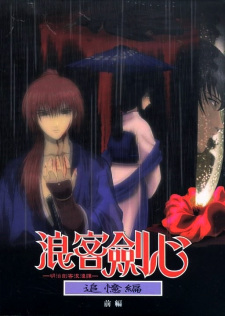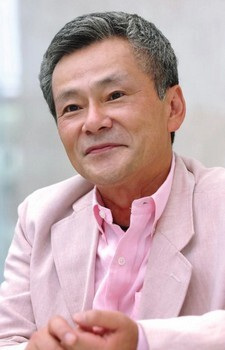
Rurouni Kenshin: Meiji Kenkaku Romantan - Tsuioku-hen
Summary: When mankind's savagery surpasses his fear of death, there is little hope for those who wish to live honest lives. Beneath a full moon, a young boy witnesses the murder of the bandits who had enslaved him, and is then christened with a new name by the man who rescued him. This boy is Shinta, now known as Kenshin Himura, and he is destined to become a swordsman. The softness of his heart does not befit the occupation, but his desire to protect the innocent is absolute.
Rurouni Kenshin: Meiji Kenkaku Romantan - Tsuioku-hen details the origins of the man who would bear the name of Hitokiri Battousai long before he swore his oath not to kill and before he earned his reputation as an assassin. The young man's heart is divided between justice and corruption, while the fate of a nation rests on his actions.
[Written by MAL Rewrite]
Description
When mankind's savagery surpasses his fear of death, there is little hope for those who wish to live honest lives. Beneath a full moon, a young boy witnesses the murder of the bandits who had enslaved him, and is then christened with a new name by the man who rescued him. This boy is Shinta, now known as Kenshin Himura, and he is destined to become a swordsman. The softness of his heart does not befit the occupation, but his desire to protect the innocent is absolute.
Rurouni Kenshin: Meiji Kenkaku Romantan - Tsuioku-hen details the origins of the man who would bear the name of Hitokiri Battousai long before he swore his oath not to kill and before he earned his reputation as an assassin. The young man's heart is divided between justice and corruption, while the fate of a nation rests on his actions.
[Written by MAL Rewrite]
Rurouni Kenshin: Meiji Kenkaku Romantan - Tsuioku-hen Pictures
Rurouni Kenshin: Meiji Kenkaku Romantan - Tsuioku-hen Review
Rurouni Kenshin: Meiji Kenkaku Romantan - Tsuioku-hen — When mankind's savagery surpasses his fear of death, there is little hope for those who wish to live honest lives. This overview is intentionally spoiler-free and focuses on tone and intent rather than plot specifics.
Thematically, It sits firmly within Action, Drama, Romance conventions as a OVA work and has garnered attention (MAL score: 8.69). This work explores character dynamics, tonal shifts, and the interplay between narrative ambition and execution. The story's pacing and tonal choices are crafted to complement the central ideas, often emphasizing atmosphere and emotional truth over explicit exposition. The show's ability to evoke a consistent mood — whether melancholic, exuberant, or contemplative — is a recurring strength, and the scenes are constructed so viewers can infer stakes without needing explicit spoilers.
Characterization is a core pillar here. Protagonists and supporting figures are written with distinct motivations and narrative roles; even when archetypal, the series invests in small behavioral details that make choices feel earned. Character arcs are handled with an eye for gradualism: development often arrives through incremental beats rather than abrupt, expository shifts. The interactions between characters create texture, and relationships are used to illuminate both personal flaws and larger thematic concerns.
On the visual front, production values play a significant role. The animation quality varies by sequence but frequently showcases thoughtful direction and composition. Background art, framing, and color palettes are used deliberately to support tone — quieter scenes favor muted palettes while action or heightened emotional beats employ brighter, more kinetic visuals. Direction choices, such as camera movement and shot selection, often elevate scenes beyond their raw script, creating moments that linger in the viewer's mind.
The soundscape — score, incidental music, and sound design — complements the visual language. Music cues are placed to maximize emotional resonance without manipulating the audience with melodrama; this restraint often leads to more authentic emotional payoff. Sound design punctuates key moments, and when the series leans on silence, those quieter moments are given weight by measured audio choices.
Pacing and structure are handled with craft. Episodes are arranged to build tension and release methodically, and the narrative rarely rushes through important emotional beats. That said, the deliberate pacing may feel slow to viewers who prefer faster plot turnover; the reward is greater nuance and an accumulation of meaning across the series. Accessibility is generally good — one can appreciate surface-level pleasures, while repeat or attentive viewing reveals additional layers.
No title is without flaws. Occasional unevenness in subplots or variable animation across episodes can be distracting. Some tonal shifts might feel abrupt if you expect uniformity; others will argue that those shifts are purposeful. These are worth noting, but they seldom undercut the larger achievements of the work.
In sum, Rurouni Kenshin: Meiji Kenkaku Romantan - Tsuioku-hen offers a rich experience for viewers who value character-driven storytelling, considered visual design, and a soundtrack that supports rather than overwhelms. For fans of Action, Drama, Romance, this is an especially rewarding watch. It's recommended for those who appreciate layered narratives and artistry in animation, and best approached with patience and attention to nuance.
Characters & Voice Actors

Himura, Kenshin
Main

Himura, Kenshin
Main

Himura, Kenshin
Main

Himura, Kenshin
Main

Himura, Kenshin
Main

Himura, Kenshin
Main

Himura, Kenshin
Main

Himura, Kenshin
Main

Himura, Kenshin
Main

Hijikata, Toshizo
Supporting

Hijikata, Toshizo
Supporting

Hijikata, Toshizo
Supporting

Hiko, Seijuurou
Supporting

Hiko, Seijuurou
Supporting

Hiko, Seijuurou
Supporting

Hiko, Seijuurou
Supporting

Hiko, Seijuurou
Supporting

Hiko, Seijuurou
Supporting

Hiko, Seijuurou
Supporting

I'izuka
Supporting
Staff

Campbell, Charles
Producer, ADR Director, Recording Engineer

Naruke, Yoshinori
Producer

Furuhashi, Kazuhiro
Director, Episode Director, Storyboard

Hata, Shouji
Sound Director

Shimizu, Akira
Episode Director

Matsumoto, Jun
Storyboard

Abe, Ai
Production Manager

Abe, Takuji
Key Animation

Caradec, Hervé
ADR Director

Fujioka, Maki
Key Animation

Fujita, Mariko
Key Animation

Furihata, Masahiro
Key Animation

Hasegawa, Hiroshi
Planning

Hayama, Junichi
Key Animation

Hayashi, Akemi
Key Animation

Hidaka, Mayumi
In-Between Animation

Hoshino, Kouichi
Key Animation

Iwasaki, Taku
Music

Kobayashi, Toshimitsu
Key Animation, Animation Director

Koyama, Tomohiro
Key Animation